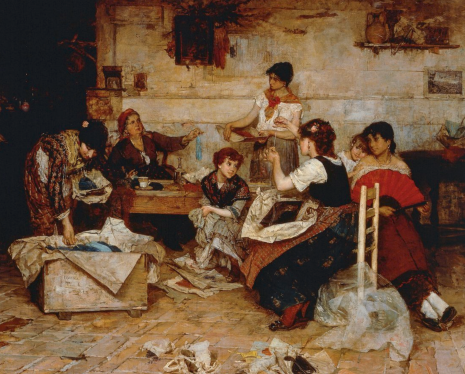
Attending to Early Modern Women – new deadline
After requests at last weekend’s SCSC conference, we’ve decided to extend the deadline for workshop session proposals for next June’s Attending to Early Modern Women to December 15. Instructions for submitting proposals are on the conference website:
http://www.atw2018.uwm.edu/call-for-proposals/
Several people have posted ideas for workshops, for which they are looking for co-collaborators. These are below, as well as on the website.Merry
Accounting for Women: Economic Collaborations, Networks, and Alliances
Within the topic of Collectivity, I would like to work with others interested in exploring women’s agency and actions in professional collaborations or alliances. Such collaborations might include women’s roles in family businesses, but also participation in guilds, trades, or professions; experiences as apprentices; or their inclusion—whether formally or informally—in other sorts of economic networks. We might interrogate the significance of women’s economic contributions as well as their advantages/disadvantages relative to men of different/similar social degree. I would engage the topic from the field of early modern English studies, attending to wives and daughters in the business of theater in 16th- and 17th-century England, with particular focus on the familial ambitions of Agnes Henslowe and Joan Alleyn in relation to the Rose Theatre. Ideally, the workshop would bring together a range of scholarly perspectives including those grounded in the visual arts, history, as well as literature from various times and geographic origins.
Please contact: Theresa Kemp, Professor of Critical Studies in English
University of Wisconsin—Eau Claire
tkemp@uwec.edu
Networks, Destruction, and Contested Categorization Beyond the Human Realm
What counts—in early modern art, literature, historical documents, or other texts—as “human,” “nonhuman,” “nature,” or “culture”? How are these categories defined with respect to gender, race, and class? What kinds of collaborations between humans and the world, or between non-human elements or actors, do early modern texts present or disallow? What role does human or nonhuman violence play in these depictions? Are particular genres engaged more deeply with these questions? For example, why do some romances frame the destruction of or violent conflict with a complexly gendered natural world as necessary for the hero’s quest or personal growth? I am approaching these questions from the perspective of early modern English literary studies, and eagerly anticipate putting my examples—primarily from Spenser’s The Faerie Queene, Wroth’s Urania, or Aphra Behn’s Oroonoko—in conversation with examples and ideas from art, history, politics, other literary traditions, or other disciplines.
Please contact: Dr. Dyani Johns Taff, English Department Lecturer
Ithaca College
dtaff@ithaca.edu
Portraits: Identity, Spaces, Social networks, Alliances
Under the rubric Collectivity, I would like to collaborate with others interested in “portraits,” in whatever medium or form (e.g. symbolic, literary, architectural, auto/biographical). I am an art historian, but would hope to find scholars from other disciplinary bases who are thinking about women’s particular investment in portraits: not just as makers (although women were frequently portrait painters) but also in how portraits established or challenged identities, activated spaces, circulated in familial and economic networks, and functioned in forging alliances.
Please contact: Sheila ffolliott, Sffollio@gmu.edu
http://www.americanfriendsofattingham.org
www.shepnsheila.com
Pregnancy and Childbirth: Preparation and Participation
Participants for a panel to respond to the question of ‘how?’ proposed in the call for papers by asking how women prepared for and participated in childbirth, pregnancy, and newborn care. In particular, the panel would address the conference themes of collectivity (familial networks, collaboration, alliances, and perhaps even objects in circulation), asking how women assisted one another in the birth process, in preparations for birth, and in care of newborns. Issues related to breastfeeding and wetnursing could also be considered.
I will address the topic from the perspective of Spain, based on archival research conducted on household manuals and recipe books from the 16th-17th century, female-authored poetry, and midwifery manuals.
Please contact: Dr. Emily Kuffner, Visiting Assistant Professor of Hispanic Studies,
College of St. Benedict and St. John’s University
ekuffner@csbsju.edu
Dans la même catégorie



